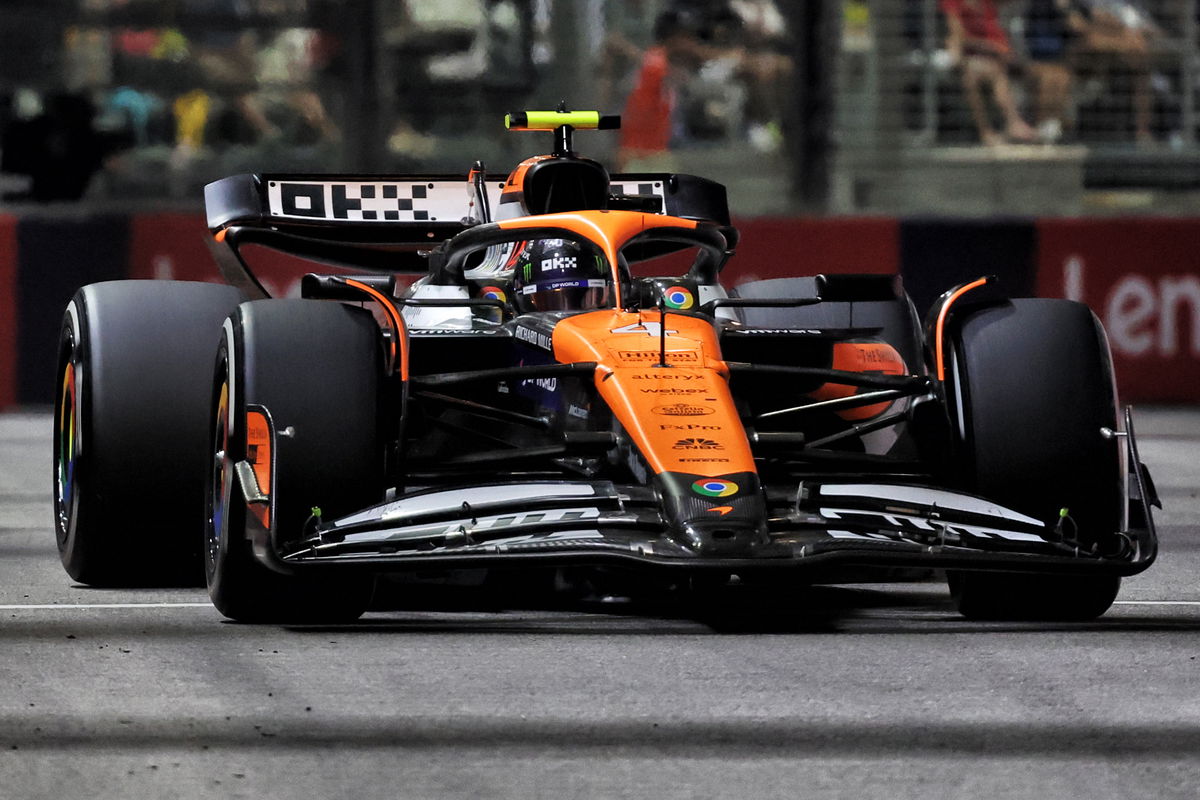

McLaren has chased down a 115-point deficit in the constructors’ championship to now head the competition by 41 points with six races remaining.
The Woking-based squad has been a consistent front-runner since introducing upgrades at the Miami Grand Prix.
Between Lando Norris and Oscar Piastri, the squad has won five grands prix in that time while rivals have seen their performances ebb and flow.
That has often coincided with the introduction of upgrades, which have proved hit and miss.
However, McLaren has not suffered the same fate, with each package proving beneficial.
It has also remained at the front of the field across a variety of tracks and in a variety of conditions, another feat rivals have struggled with.
“I would like to answer that yes, big engineering behind it, it’s all clear, I know exactly why we stay in the window despite the change of conditions,” Stella began.
“The reality is that I think it’s a very complicated kind of science, very difficult to put in objective engineering terms.
“What we’re trying to do is study the data, historical data, on tyre conditioning and temperature and try to do our best with engineering solutions.
“Likewise, we want to make sure that the car has a good balance, [and] overall good aerodynamic characteristics.
“And what we have seen is that, when you try and pursue these directions, normally the car responds well.”
More on McLaren
👉 FIA flexi-wing change good news for McLaren
👉 McLaren “still not fast enough” despite huge milestone
👉 McLaren hails “phenomenal” Piastri after Azerbaijan win
Part of McLaren’s success has been its approach to development.
In Miami, it introduced an upgrade package on a Sprint weekend – a brave decision given the limited practice time in which to assess the development.
Given the complexity of modern F1, introducing new parts is a risk.
Most prevalent of late have been balance shifts that dramatically hamper a driver’s ability to push the car to the limit – a point made by Christian Horner when speaking of the shortcomings of the Red Bull Racing of late.
Weighing up that risk against the potential bonus developments have is as much a fine art as black magic.
“We you have this kind of performance on track, you always may approach things from a cautious point of view in terms of development,” Stella said post-Singapore, where Lando Norris romped to an easy win.
“At the same time, we need to trust the process. We need to trust the way we’ve been working so far.
“We have taken our time to make sure that once we deliver parts, we have done the due diligence.
“In Formula 1, I’m not sure you can back off too much because backing off means that the others may catch.
“We don’t know what the plans of the others are.
“We need to keep being aggressive in terms of development.”
It’s expected that Red Bull Racing will deliver an update of sorts at the United States Grand Prix, with Ferrari and Mercedes also believed to have packages in the works.
While McLaren had just a new beam wing in Singapore, a high downforce component which will see use in Mexico too, it has typically preferred to introduce larger suites of upgrades that have been developed in concert with one another.
“It’s nice to be delivering lots of little upgrades all the time,” said Rob Marshall, McLaren’s chief designer.
“But equally, sometimes you just have to hold on a little bit while you wait for a chunk of bits to come all the same time.
“The advantage in doing that is that often bits don’t combine very well, or as well as you think they would.
“If you deliver them in one lump, that combination of parts has been in CFD together, it was developed together, so you can be more confident that combination of bits works well together.
“If you do it bit by bit, you might introduce an upgrade on one part and then work on another part and find out, actually, it’s a bit compromised by the previous change you made.”
McLaren now heads the constructors’ championship by 41 points over Red Bull Racing, while Max Verstappen maintains a 52-point advantage over Norris at the top of the drivers’ championship with six races (and three sprints) remaining.






















Discussion about this post